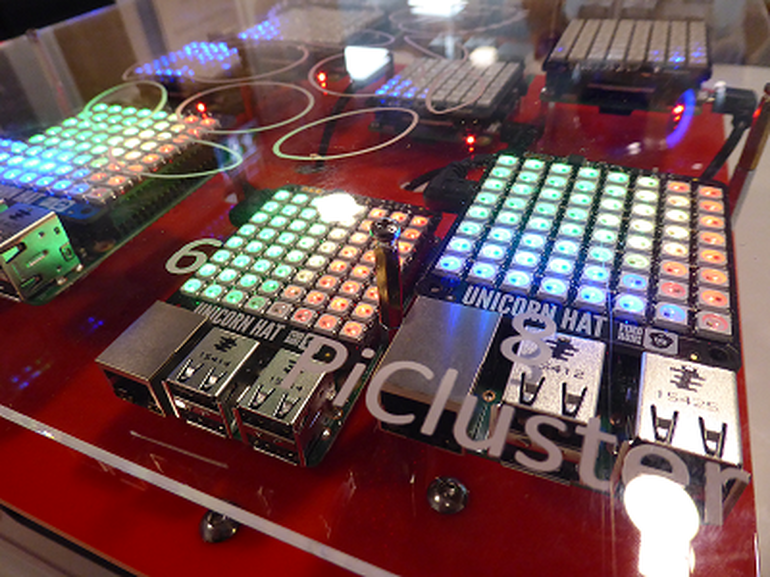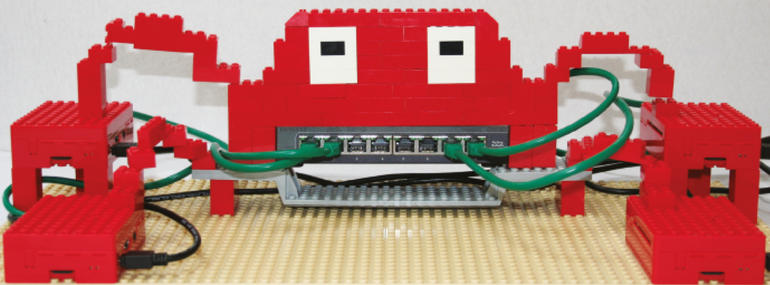The Pi clusters that push the $35 board to its limits.
| player version | 0.42.297 |
| stream type | HLS |
| playback state | 2 |
| duration | 647.7811039999995 |
| current time | 9.52 |
| buffer length | 132.10 |
| average dropped (fps) | 0.00 |
| playback framerate (fps) | 29.97 |
| switching mode | auto |
| transition state | complete |
| start index bitrate (B/s) | -0.00k |
| current index bitrate (B/s) | 1.83M |
| current bandwidth (B/s) | 47.46M |
While the $35 Pi is by no means a computing powerhouse, in recent years enthusiasts have begun harnessing the power of armies of the tiny boards.
There's a wide range of Pi clusters out there, from modest five-board arrangements all the way up to sprawling 750-Pi machines.
If you're curious to find out more, then here's five Pi clusters built in recent years, starting with some you can try yourself and moving on to the Pi-based supercomputers being built by research labs.
Hadoopi - five-boards
Fancy doing some big data analytics on the Pi? Now you can — albeit very slowly.
Recently updated, these guidelines describe how to run the big data software framework Hadoop on a cluster of five Raspberry Pi 3 boards, for instance to analyze the likes of Twitter posts, Yelp reviews or web logs.
SEE: Hardware spotlight: The Raspberry Pi (Tech Pro Research)
Even though the machine utilizes five boards, the fact each board only has four CPU cores and 1GB RAM means the analytics framework runs "slowwwwwwwww", according to its creator, who pitches the cluster as more of an opportunity to learn about using Hadoop than a serious platform.

An early version of Hadoopi.
OctaPi - eight boards
Another cluster you can build yourself, this eight-Pi setup is designed to carry out tasks in parallel in a fraction of the time it would take a single board.
The Raspberry Pi Foundation has a tutorial outlining how to test the power of the OctaPi by running various tasks related to cryptography, the practice of encrypting and decrypting messages. The OctaPi is far faster than a single board at calculating prime factors, a key task when cracking encryption. However, the OctaPi's combined power still falls far short of that needed to crack keys generated by modern encryption algorithms.

A close-up view of an OctaPi, complete with Unicorn HATs.
Wee Archlet - 18 boards
Wearing its Scottish heritage on its sleeve, the Wee Archlet packs 18 networked Pis into lego blocks and is designed to be portable "supercomputer".
The University of Edinburgh shows the machine at events, where it helps teach people about the design of distributed computing systems.
If you fancy a go at building your own slightly smaller version of the Wee Archlet, you can follow the instructions here.

The Wee Archlet in all its glory.
Bolzano Raspberry Pi Cloud Cluster Experiment - 300 boards
This 300-board machine is built around the original Raspberry Pi released way back in 2012, so despite using hundreds of Pi boards, it doesn't quite live up to its supercomputing billing.
In tests the Bolzano Raspberry Pi Cloud Cluster Experiment wasn't powerful enough to run the cloud orchestration software OpenStack, so was used for subcluster management.
That said, given the latest Raspberry Pi 3 B+ is more than 10 times faster than the original Pi boards, there's a good chance that an upgrade would allow it to do more useful work.
Los Alamos National Lab - 750 boards
The Los Alamos National Lab (LANL) machine serves as a supercomputer testbed and is built from a cluster of 750 Raspberry Pis, which may later grow to 10,000 Pi boards.
According to Gary Grider, head of its LANL's HPC division, the Raspberry Pi cluster offers the same testing capabilities as a traditional supercomputing testbed, which could cost as much as $250m. In contrast 750 Raspberry Pi boards at $35 each would cost just under $48,750, though the actual cost of installing the rack-mounted Pi clusters, designed by Bitscope, would likely be more.
Grider highlights power-efficiency benefits too, and estimates that each board in a several-thousand-node Pi-based system would use just 2W to 3W.
The current 3,000-core Pi cluster was built as a pilot, and LANL has stated it intends to build the machine out to 40,000 cores this year, taking it to around 10,000 Raspberry Pi boards.

The LANL cluster




















